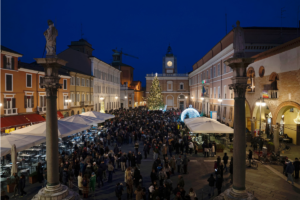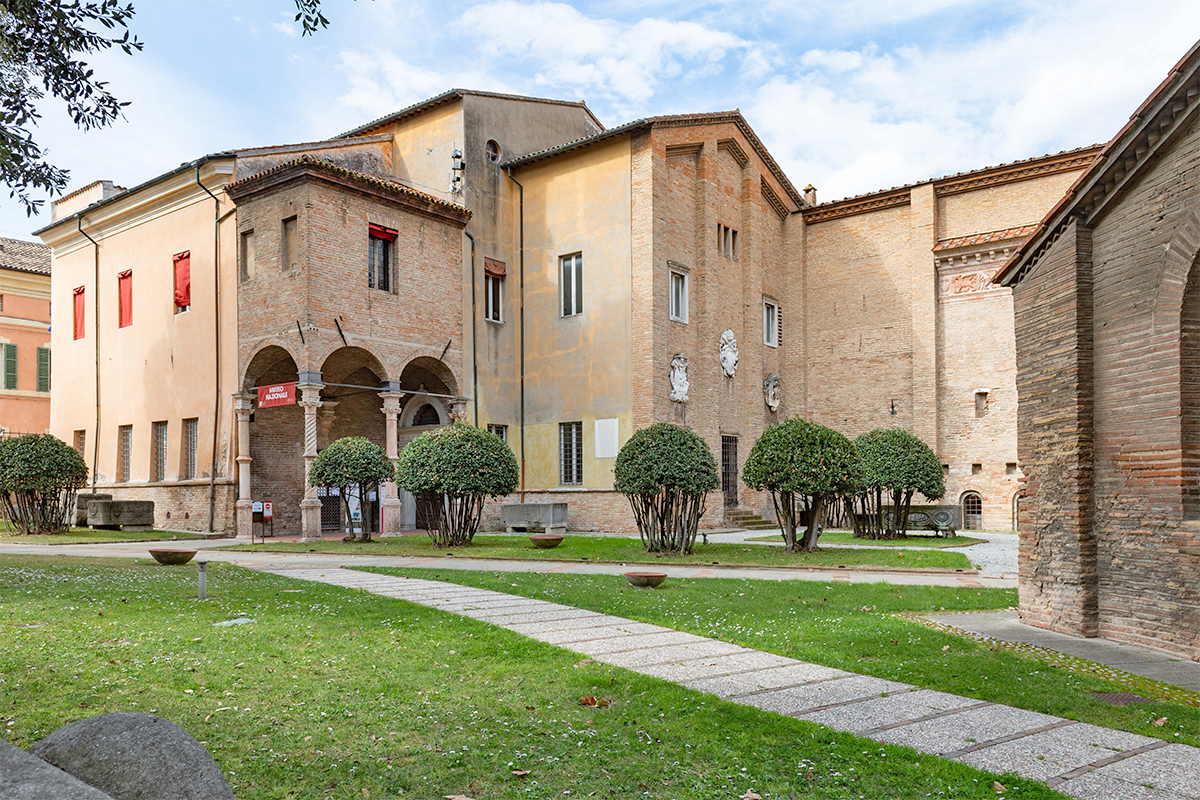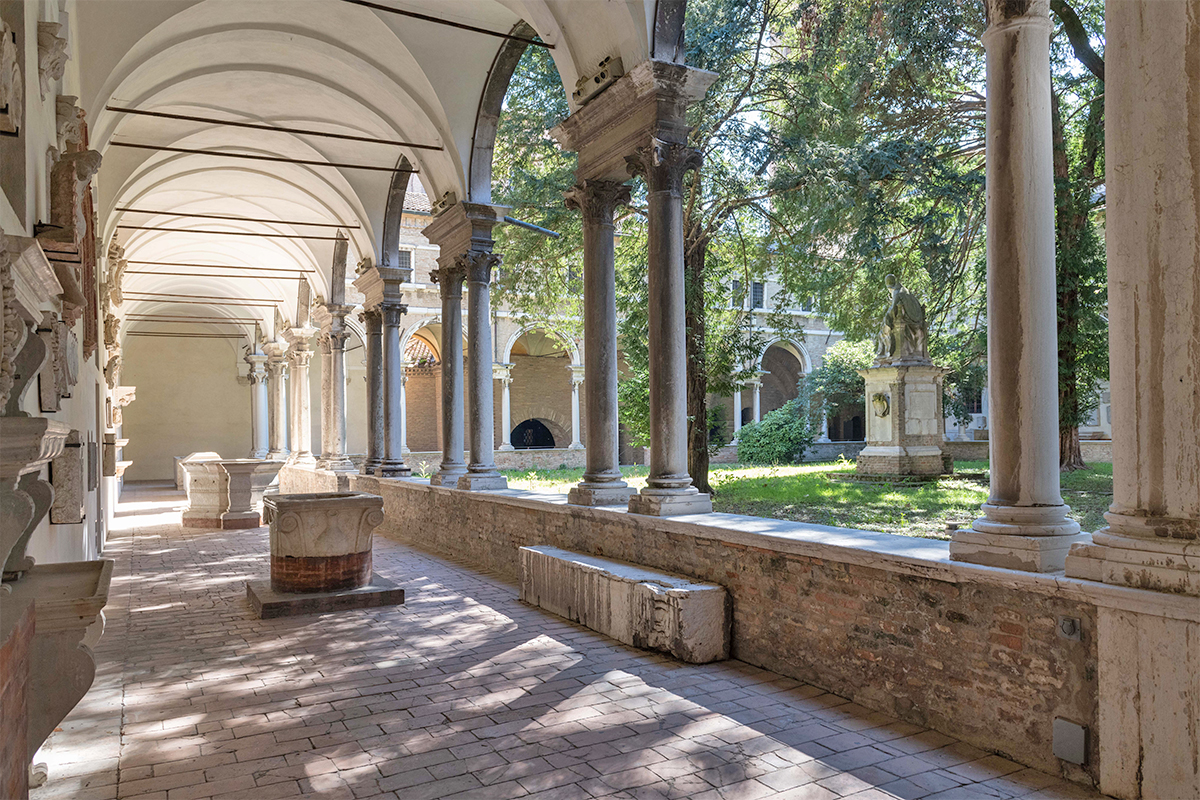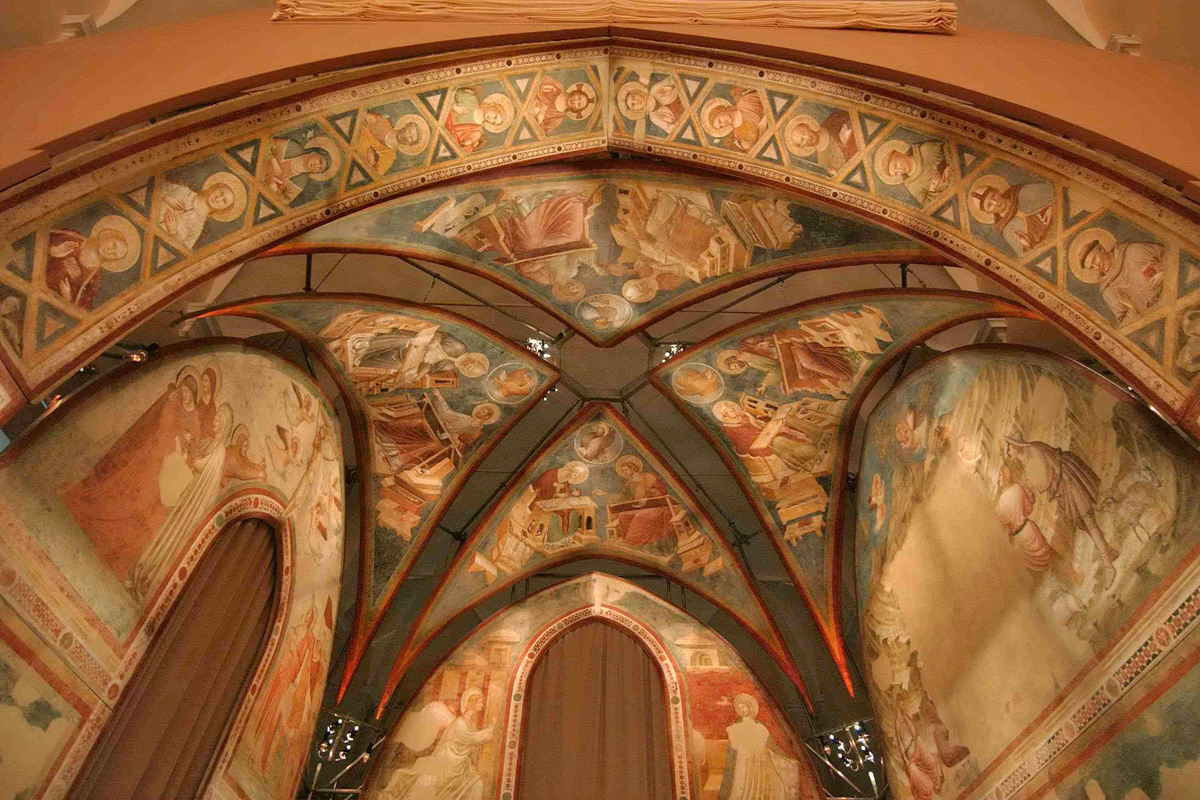The spaces of what was once the Benedictine monastery of San Vitale, located next to the well-known basilica of the 6th century, have been hosting since 1885 the NATIONAL MUSEUM OF RAVENNA, with its noteworthy and different collections.
The original nucleus of the museum’s collection dates back to the 18th century, gathered by the learned monks of the big city abbeys, especially the Camaldolese monks of Classe, who used to collect several objects of artistic, ancient and naturalistic interest.
Today, the museum displays important archaeological finds, such as sepulchral slabs, Byzantine sculptures, prestigious objects connected with the UNESCO monuments and wide collections of applied arts.
Thanks to the suggestive atmosphere of the two Renaissance cloisters and of the abbatial spaces, the museum is a keystone of the must-see attractions in Ravenna, further proof of the artistic splendour the city has reached over history.
The rooms of the National Museum
On the ground floor, around the first and oldest cloister (end of the 15th – beginning of the 16th century), there are Roman lapidary relics, mainly epigraphs, bas-reliefs, stelae and sarcophagi dating back between the 1st and 3rd century AD.
Among which stands out the Apotheosis of Augustus and the famous herms of heroes and philosophers of the Ancient Greece that some fishermen found in the sea, near Ravenna.
In the second cloister, on the other hand, there are exhibits of several stony finds; they cover a period of time ranging from the 5th century AD to the Baroque age.
The most worthy of note are the Traditio Legis sarcophagus and the so-called “butterfly” column capitals from Theodoric’s age.
The monumental staircase designed by monk Benedetto Fiandrini in 1790 leads to the first floor.
The artefacts, far distant in time from one another, have all common aim of telling the past splendour of Ravenna.
The National Museum displays a collection of small Renaissance bronzes and plaques, as well as furniture coming from the Moors pharmacy dating back to the 18th century.
You will see some rooms dedicated to the imperial Church of Santa Croce; a selection of research results on the Palatium — the Imperial Palace and court of Theodoric; and the treasures of San Vitale and San Michele di Africisco.
Furthermore, worth a mention are the ivory collections, especially the 5th-century panel depicting Apollo and Daphne, the 6th-century Murano diptych; the Classense Library’s icons collection, including the Crucifixion by Paolo Veneziano; lastly, the ceramics collection that were either purchased or donated.
The visit ends in the large refectory of the former monastery, with the fresco cycle taken from the Church of Santa Chiara (today Luigi Rasi Theatre), by Pietro da Rimini, one of the most important painters of the 14th-century Rimini school.










